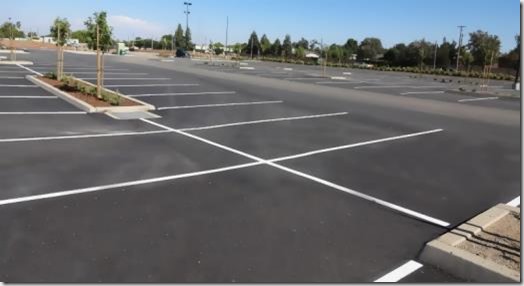 This story in the Times came through via the newsfeeds. I’m sorry, but it is the biggest pile of manure I’ve seen in a long time.
This story in the Times came through via the newsfeeds. I’m sorry, but it is the biggest pile of manure I’ve seen in a long time.
Driving instructors are pressing for cycle awareness to become part of the practical driving test as a way of slowing a rise in collisions with cyclists.
Translated away from media-speak, this means a handful of instructors who ride bikes themselves have watched the Tour de France and the Olympics, got all excited over it, and so have decided to have their 15 minutes of fame. They’ve run a poll, and while 75% of those responding agreed that learners should be taught about cyclists, it does not mean they think there is a problem. The questions appears to have been worded in such a way that only one outcome was possible.
The real reason that the collision rate between motor vehicles and cyclists is rising is because a very high percentage of cyclists are prats who have no road sense whatsoever, and the sheer number of them out there is on the rise. They ignore cycle paths built specially for them, and practice arrogance to the highest degree. The report even provides this answer in black and white – and then ignores it:
…the number of cyclists killed or seriously injured rose by 13 per cent in the first quarter of 2012, at a time when the number of car occupants killed or seriously injured fell by 4 per cent.
It just has to be a cyclist – someone who is already a few pumps short of fully inflated in the brain department – who can write something like that and then proceed as if exactly the opposite were true.
The real problem starts with lack of cycling proficiency testing among kids, which fell out of favour decades ago. The result is that the current crop of Bradley-wannabes (dressed in blimp costumes) haven’t got a clue. Even worse, most of them don’t want one, since it doesn’t fit in with being arrogant tossers.
Speaking for the motorist, I can guarantee right now – absolutely 100% guarantee – that not one learner driver out there thinks cyclists just bounce when they get hit by a car (no matter how well padded many of them are). I can similarly guarantee that not one learner thinks it’s OK to run over one (just like with squirrels and bunny rabbits). They already get plenty of training about how not to drive into things, and cyclists are only a special case of that – different to pedestrians, for example – because they do things that pedestrians generally don’t. Most learners are so aware of this to the extent they would rather drive headlong into an oncoming bus than approach within four car widths of any cyclist we encounter on lessons. They actually have to be stopped from overdoing it in many cases.
So to suggest that learner drivers need “training” to stop them from thinking that a typical journey must play to the script of some zombie-apocalypse movie is just bloody stupid, and coming from driving instructors, it merely reinforces what I have always said: they tend not to be the brightest sparks in the fire. In fact, they’re rapidly catching up with cyclists on that front.
Cyclists should be kept off most roads (especially clearways), dissuaded from using others, and prosecuted for not using cycle lanes when there is one less than 2 metres away from them. They should pay road tax (or whatever you want to call it) and have to pass a test in order to be allowed anywhere near a road with cars on it. Cyclist advanced stop lines at traffic lights should all be torn up, since the average cyclist will wobble his or her fat arse all the way to the front anyway – whether there’s an advanced line or not – in order to hold up as many people as possible. Either that, or they’ll just skip on to the pavement via the pedestrian crossings to avoid having to stop at all.
Martin Gibbs, British Cycling’s Policy and Legal Affairs Director, said: “We want to see learner drivers educated to see cyclists as legitimate road users who have a right to be treated with respect and consideration. We are also calling for drivers to learn safe overtaking manoeuvres.”
Well, I suppose a HEAD cyclist would be expected to come out with the most stupid comment of all. What dos he think learners get taught? Dangerous overtaking? Run over cyclists?
The people who need training are the ones on two wheels. Not four.
Update #1: I’m attracting a lot of hits from a Scottish cycling website, and it’s no surprise that they aren’t particularly enamoured of this article – from what I can see, that’s because they don’t understand the issues. I tried not to use any big words or joined up writing, but we’re talking about cyclists here…
The problem is – and all those spitting feathers over this article are incapable of seeing it – a huge number of cyclists regularly engage in the following:
- no signals of any kind
- riding on the pavement when it suits them
- not using cycle lanes right next to them
- riding across pedestrian crossings to avoid red lights
- riding on to the road from the pavement without looking
- riding two or more abreast and blocking traffic
- looking behind and SEEING they’re blocking traffic – and continuing to do so
- riding on clearways and busy dual carriageways during rush hour
- riding slowly on fast roads
This is not an exhaustive list. But it is absolutely 100% accurate – the vast majority of cyclists do at least one of these things every time they go out. Many of them probably aren’t even aware they are wrong or causing inconvenience, but many know bloody well what they’re doing, and just don’t care. Both types are as bad as each other.
As I’ve said before, I used to ride with a herd of cyclists and I know exactly what they think about cars and causing hold-ups, etc.
Recently I had an email from some clown who said “cyclists have a right to be on the road”. Like all the rest, his tiny brain-like structure was incapable of understanding what this means. Let us just clarify.
Roads are primarily for cars and other motor vehicles. Cyclists and other users are allowed to use them. However, it is assumed that all road users follow their own applicable guidelines for how to behave, and to adhere to the laws and regulations which apply to everyone equally. These guidelines appear in something called The Highway Code.
I am totally opposed to anyone who abuses the rules, regulations, and guidelines. I regularly comment on bad car drivers – especially because I teach people to be good ones. I also comment on other bad road users in general, and cyclists can bleat all they want when I latch on to them – the list I gave above is highly representative of a massive proportion of bicycle riders out there.
The Spandex-clad Bradley-wannabes simply do not indicate – the only use hand signals they use of any kind are to communicate with irate drivers who can’t get past. It’s got a hundred times worse since the Tour de France and Olympics.
Remember: roads are primarily intended for motor vehicles. Being granted access to them does not make you more important than the roads’ primary users.
Those who don’t like this article are missing the point completely. But then again, if they got the point I wouldn’t be writing about them at all, would I? Still, some of the replies from people are amusing in their banality – once one person has been shocked, and said so, anyone else who says the same (and added nothing new) is just an annoying echo! The forums who see this blog and start whining are just one big, content-free echo.
The people on that Scottish site have really missed the point of this article. Their attitudes all stem from the maxim “got a bike, so I’ll do what I want”, which was one of my main underlying concerns. Absolutely nothing they’ve said suggests they believe otherwise, which proves my point entirely.
Update #2: Well, the Caledonian branch of the “I wanna be just like Bradley” association is really up in arms over this. I noticed a few hits from another source and when I tracked it back it turns out the author of the site is one of the vociferous bunch I mentioned above (from Edinburgh).
In that sense, what he is saying is not really another voice – it’s just the same voice coming from a different place (i.e. his own blog).
Sometimes, I get a pupil who I ask to turn left. They signal left, stay in the left hand lane, and… try to turn right instead. This guy (and all the other McBradley-wannabes) is just like that. He still fails completely to see the point and effectively goes off in a totally separate direction.
He calls himself a “permacyclist”, and although I’m sure that that gets a round of laughs or admiring glances at the local meets as they’re taking off their anoraks (not to mention a wiggly red line from the spellchecker), it doesn’t really have much meaning in the real world. You’re either a cyclist, or you’re not (as I’ve mentioned in passing, I am a cyclist when the fancy takes me). You don’t need any prefixes to gloss it up. Oh, and his photos reveal him to be one of the Spandex-boys, many of whom I have mentioned frequently in this blog.
In his attempts to justify his arrogant cyclists’ attitude he has concluded that I teach pupils to run over cyclists and other road users. He has concluded that all ADIs teach the same (except for his instructor, of course). You can see why I consider the majority of Bradley-wannabes as arrogant and non-too-bright, can’t you?
But he moves into very dangerous territory when he tries his hand at logic. You see, logic only works when you are objective – and simply saying that you are in your bio doesn’t make it true (especially when said blog twists everything into pro-cycling gobbledegook, and never puts the other side across). As I have said – and this is the point that they all keep missing, making the use of logic impossible for them – most cyclists DO ride poorly on the roads. They almost always DO NOT signal. They DO often nip over pedestrian crossings and pavements to avoid red lights. They DO ride THROUGH red lights (just doing it SLOWLY doesn’t make it right, guys – you’re still shooting a red). They DO ride on busy clearways when there is a cycle path running parallel to them and cause hold ups during rush hour. They DO sometimes DELIBERATELY ride several abreast when they KNOW they’re holding people up (I’ve had that from the horses’ mouths). And it goes on and on.
And virtually ALL cyclists do at least one of these things whenever they go out. Some KNOW they’re doing it. But MANY haven’t got a clue. And THAT’S why THEY need educating.
His stab at logic falters again when he argues that cyclists have driving licences, thus implying (even almost stating) that they are perfect drivers with spotless attitudes towards cyclists. This is complete rubbish – having a drivers licence doesn’t make you a good driver, and it has no effect whatsoever on your general attitude. If you decide to be a prat (and being a cyclist doesn’t automatically preclude that), or to follow the herd, then you will do it whether you have a driver’s licence or not, and whether your are in a car or on a bike. Once competence, or lack thereof, has been noted, it comes down to ATTITUDE.
He then moves his logic into the usual politically-correct territory and involves children (even posting a photo of one on his site without blurring their face in order to make a point, which is dangerous when you consider that the web is full or weirdos). No doubt his aim is to curry emotional support by bringing kids into it.
The Spandex-clad Bradley-wannabes aren’t kids. They’re “thirty-something” men (actually, since the Tour de France and Olympics, they’re any adult of any adult age). This has nothing to do with children as far as riding on busy roads and purposely causing hold-ups (or any of the other favoured pastimes) is concerned.
But since children HAVE been brought into it, it is frightening that if they are the offspring of arrogant cyclists who haven’t got a clue about road safety and their position in the pecking order when it comes to rights and responsibilities on the roads (and who wilfully ignore cycle paths, which are there for their own safety), is it any wonder that the accident rates involving cars and cyclists is increasing?
Ironically, the “under-10s” he mentions have better road sense than most Bradley-wannabes. They DON’T usually go on main roads.
Cyclists have certain responsibilities on the roads, and rules that they’re supposed to adhere to. Maybe they should try following them once in a while, instead of trying to justify their otherwise arrogant refusal to do so.
In the meantime, I’ll do what anyone who understands real logic would do – and carry on teaching my learners how to drive properly, including watching out for cyclists who may veer out without signalling, ride off pavements, ride wide or erratically, or weave through traffic on either side. That’s what ANY good driving instructor should be doing.
Update #3: Site traffic has gone through the roof again as of 9 January 2017. Another cyclists’ website has found this article (albeit five years after it was written).
I’d draw their attention to this later article also on the blog. Oh, and also that any previous email dialogue between myself and holier-than-thou forum members was not as one-sided nor as “nasty” as one party is suggesting, and that Flitwick is spelt differently to Nottingham, and – oddly enough – it also appears in a different place on most maps!
One more time: I am a cyclist myself (sometimes). I passed my cycling proficiency when I was 11. I always adhere to the rules in the Highway Code, whether in a car or on my bike. That puts me in a minority among cyclists.
They’re the ones I have issues with.
 Obviously, the concept of safety is a little hard for some Mancunians to grasp when you read this news story..
Obviously, the concept of safety is a little hard for some Mancunians to grasp when you read this news story..


 radley Wiggins was in Nottingham. The reporter was outside the Castle, so I made a mental note not to go anywhere near there on today’s lessons.
radley Wiggins was in Nottingham. The reporter was outside the Castle, so I made a mental note not to go anywhere near there on today’s lessons.
 This
This  An
An